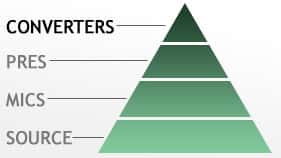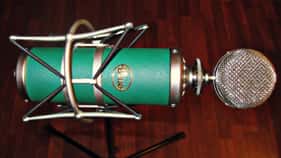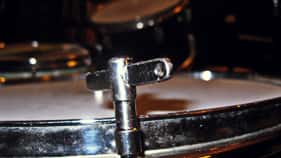
Signal Chain Hierarchy – Part 4: A to D Converters
For the last three weeks, I have been sharing my opinions on the recording signal chain and where each piece ranks in terms of a hierarchy of importance. We talked about the source you record being the most important – you can’t record what you don’t have to begin with. The microphone comes next. After the source itself, the microphone you choose has the greatest ability to alter the way the source is heard. Following that, the microphone preamplifier helps you further color and enhance what the mic hears. This week, we finish this little series talking about the A to D converters for drum recording that take sound capture into the digital world.
It seems to be a myth I keep running into, people that feel the converter type and quality imparts this huge difference to the music you record. I feel this is absolutely false. Don’t get me wrong, converters do make a difference. High end converters can make a great recording sound fantastic. High end converters will not make a marginal recording suddenly sound good. I’ll take a great guitar tone or drum sound recorded through someone’s stock PreSonus interface converters any day over a poor source recorded through some Apogee or Aurora or Burl converters. A good set of AD converters will improve the sound quality that you get because of the higher quality internal clock and superior chip set. Sounds will have more impact and perceived clarity. However, this improvement is so subtle in the scheme of things that it merely functions as the icing on the sonic cake. The source, the mic, and the pre all make a much bigger and noticeable difference.
Within the converters, the sample rate at which you record is also an important topic. Briefly, the sample rate is the frequency, in Kilohertz, at which samples of the incoming analog audio stream are digitized and recorded. The more frequently you sample the analog stream, the greater your ability to record short wavelength, high frequency signal. More specifically, the highest frequency (in Hertz) that can be represented in a digital system (called the Nyquist frequency) is equal to half the sampling rate. So, the common CD standard sampling rate of 44.1 kHz means the highest frequency wave that can be sampled and recorded is at 22,050 Hz. For everyone that believes you should be recording at higher sample rates, consider that 22,050 Hz is still about 2,000 Hz higher than what is widely understood to be the upper limit of human hearing (and that is in IDEAL circumstances).
What does all that mean? Well, it means that while there may be a benefit to recording some things at high sample rates (like 96 kHz and above), 44.1 or even 48 kHz are completely fine for just about anything you record. If you think your recordings will sound tons better when you drop coin on that new 192 kHz capable interface with top-notch converters for drum recording, consider the following example before you start blowing through hard drives like tissues with all that extra data.
I took a single mic (Shure SM7b), set it up behind the kit to point equally toward the kick and snare, and recorded the same groove being samples at 44.1 kHz, and then again at 96 kHz. The files here are WAV format and have not been downsampled in any way. Other than subtle groove differences owing to the human element, see if one sounds notably better than the other.
44.1 kHz Sample Rate
96 kHz Sample Rate
Not much difference at all, huh? Right. So hopefully I have made my point on how converters for drum recording are the last thing in the signal chain and make the least difference in terms of perceived quality of recording.
Out of this whole series, I hope you take away that no matter what gear you have to capture the recording, amateurs and pros alike are always looking to record the best possible source they can. Make your music great. Work on your instrument’s tone and your performance. That’s the key to a great recording. Later, if you are able to upgrade to better gear, do it – and upgrade mics before pres. But, don’t fall for the advertising and think that X piece of gear or Y microphone will take your recordings from lame to platinum. Do the best with what you have and great results are possible!


